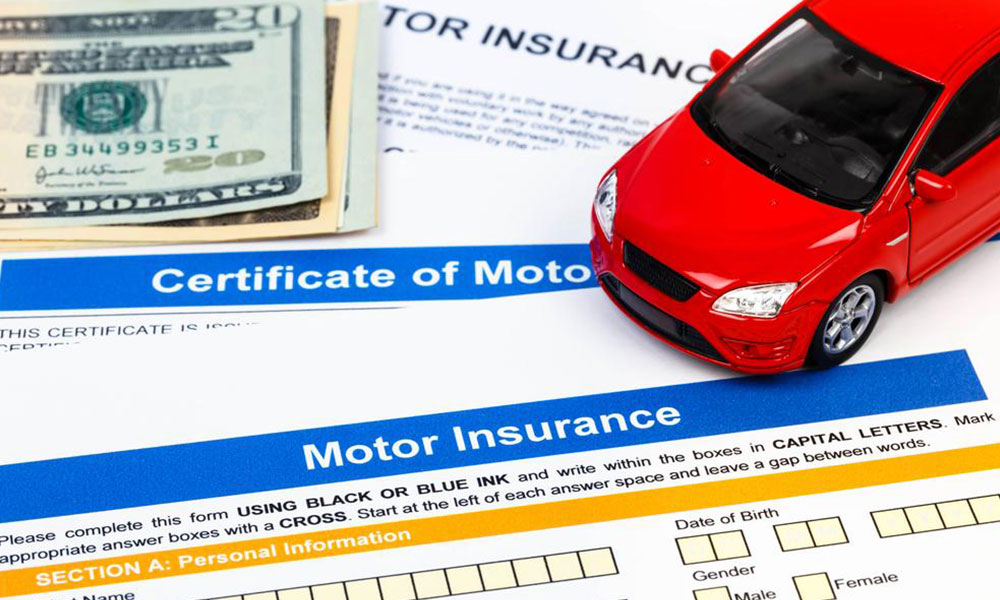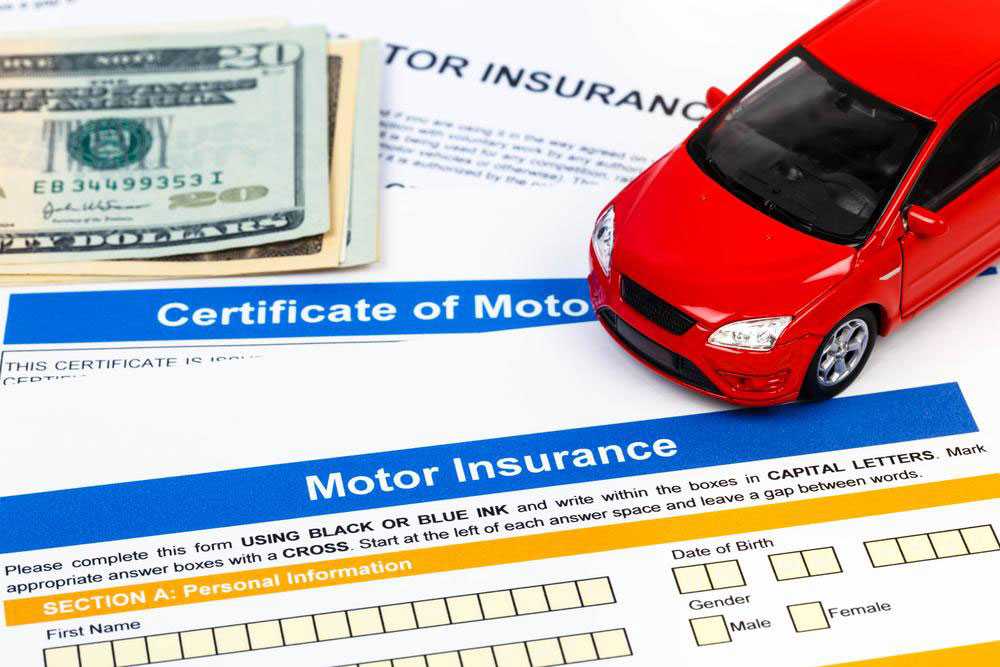The Ultimate Guide to Comparing Car Insurance Quotes
Unlock significant savings and optimal coverage by learning how to effectively compare car insurance quotes in the US. This guide reveals key steps, coverage insights, and expert strategies to find the best policy for your needs and budget.

Navigating the world of car insurance can feel like deciphering a complex code. You know you need it—it’s not just a legal requirement in most states; it’s a critical financial safety net. Yet, when faced with a dizzying array of companies, policies, and prices, many drivers simply renew their existing policy without a second thought, potentially leaving hundreds, even thousands, of dollars on the table each year.
The single most powerful tool at your disposal is the comparison quote. Comparing car insurance quotes isn’t just about finding the cheapest price; it’s about finding the right coverage for your unique needs at the best possible value. This definitive guide will walk you through every step of the process, empowering you to make an informed and confident decision.
Why Comparing Quotes is Non-Negotiable
First, let’s dismantle the myth that all insurance companies offer similar rates for the same driver. They don't. Insurers use complex, proprietary algorithms to assess risk. These algorithms weigh dozens of factors differently. One company might heavily penalize a past driving mistake, while another might offer forgiveness programs. One might offer fantastic rates to military members, while another caters to students with good grades.
Failing to shop around means you’re accepting a price based on one company's formula. By comparing, you find the company whose formula most favors your specific profile. The savings can be staggering. It’s not uncommon for drivers to save 20%, 30%, or even more for identical coverage simply by switching insurers.
Beyond price, comparing quotes allows you to:
Discover New Discounts: You might be eligible for discounts you didn't know existed.
Re-evaluate Your Coverage: Life changes. The coverage you needed five years ago might be too much or too little today.
Assess Customer Service: The claims process is where you truly meet your insurer. Researching companies during your quote comparison can help you avoid ones with notoriously poor customer service.
What You Need to Get Started: The Information Checklist
To get accurate, comparable quotes, you’ll need to have the following information handy for every member of your household who drives. Consistency is key—providing the same accurate information to each insurer ensures you’re comparing apples to apples.
Personal Information:
Full Name, Date of Birth
Address (rates can change dramatically based on your ZIP code due to crime, traffic, and accident rates)
Occupation and Education Level (some professions and degrees are associated with lower risk)
Marital Status
Driver's License Information:
Driver's License Number(s) for all drivers
Details of any moving violations, accidents, or DUI convictions in the last 3-5 years (be honest—insurers will find out)
Vehicle Information:
Vehicle Identification Number (VIN) for each car (the most accurate way)
Year, Make, Model, and Trim
Current Odometer Reading
Primary Use (commute, business, pleasure)
Estimated Annual Mileage
Details of any safety or anti-theft features
Current Insurance Details (if applicable):
Declarations Page from your current policy, which outlines your exact coverage types and limits.
Deconstructing the Quote: Understanding Coverage Types
A quote isn’t just one price; it’s a bundle of different coverage types. You can’t compare effectively if you don’t understand what you’re buying. Here’s a breakdown of the standard coverages in the US:
1. Liability Insurance (Bodily Injury & Property Damage)
What it is: This is the cornerstone of most state requirements. It pays for injuries and damage you cause to others in an at-fault accident.
How it's listed: Typically as three numbers (e.g., 100/300/50).
$100,000: Bodily Injury per person.
$300,000: Bodily Injury per accident.
$50,000: Property Damage per accident.
Comparison Tip: Do not skimp here. State minimums are often dangerously low (e.g., 25/50/25). A serious accident could easily exceed these limits, leaving your personal assets (home, savings) vulnerable to lawsuits. Experts recommend carrying at least 100/300/100.
2. Uninsured/Underinsured Motorist (UM/UIM)
What it is: Protects you and your passengers if you're hit by a driver with no insurance or not enough insurance.
Comparison Tip: This is crucial coverage. Compare the limits offered and consider matching them to your liability limits.
3. Collision Coverage
What it is: Pays for damage to your own car from a collision with another vehicle or object, regardless of fault.
Comparison Tip: This is often required if you have a car loan or lease. If your car is older and its value is low, consider whether the cost of this coverage is worth it. A good rule of thumb: if the annual premium plus your deductible is more than 10% of your car's value, it might be time to drop it.
4. Comprehensive Coverage
What it is: Pays for damage to your car from non-collision events: theft, fire, vandalism, falling objects, or hitting an animal.
Comparison Tip: Similar to collision, weigh the cost against your car's value.
5. Medical Payments (MedPay) or Personal Injury Protection (PIP)
What it is: Covers medical expenses for you and your passengers after an accident, regardless of fault. PIP is broader and may also cover lost wages and rehabilitation. It’s required in "no-fault" states.
Comparison Tip: If you have excellent health insurance, you may need less of this. However, it can cover deductibles and co-pays.
6. Deductibles
What it is: The amount you agree to pay out-of-pocket before your insurance kicks in (for Comprehensive and Collision claims).
Comparison Tip: A higher deductible (e.g., $1,000) means a lower premium. A lower deductible ($250) means a higher premium. Choose a deductible you can comfortably afford to pay in an emergency.
The Three Pathways to Comparing Quotes
There are three primary methods for gathering quotes, each with its own pros and cons.
1. Using Online Comparison Tools (The Aggregator Method)
Websites like The Zebra, Gabi, NerdWallet, and Bankrate allow you to enter your information once and receive quotes from multiple insurers.
Pros: Incredibly fast and convenient. Provides a broad overview of the market in minutes.
Cons: They may not include quotes from all insurers (e.g., State Farm and GEICO often don't participate fully). You may still need to finalize the quote on the insurer's own website.
2. Going Directly to Insurance Company Websites
Visit the websites of major insurers (GEICO, Progressive, State Farm, Allstate, USAA, etc.) and some smaller regional companies to get direct quotes.
Pros: You are getting information straight from the source. Often, the final price and specific discount options are only available here.
Cons: Time-consuming. You have to fill out the same lengthy form repeatedly for each company.
3. Working with an Independent Insurance Agent
An independent agent represents multiple insurance companies, not just one.
Pros: They do the shopping for you. They have expertise and can often find niche insurers or explain complex coverage questions. They can provide a curated list of the best options for your needs.
Cons: They may not have access to every direct-to-consumer company (like GEICO). You are relying on their diligence.
The Winning Strategy: Use a hybrid approach. Start with an aggregator site to identify 3-5 front-runners. Then, go directly to those companies' websites to get a finalized, precise quote. If your situation is complex (e.g., a DUI, multiple classic cars), then consulting an independent agent is highly recommended.
Beyond the Price: Critical Factors to Compare
The premium is vital, but it shouldn’t be the only factor. A cheap policy is worthless if the company is a nightmare to deal with when you file a claim.
Financial Strength Ratings: Check ratings from A.M. Best, Standard & Poor’s, and Moody’s. You want a company with an "A" rating or higher, indicating it has the financial stability to pay out claims, even in a major disaster.
Customer Service and Claims Satisfaction: Research J.D. Power ratings and customer reviews on sites like the Better Business Bureau (BBB). Look for patterns in complaints. Are people constantly complaining about delayed claims or poor communication?
Digital Tools and Accessibility: How easy is it to manage your policy, make payments, and—most importantly—file a claim? A best-in-class mobile app can make your life significantly easier.
Discounts: A low initial price is great, but a company that offers numerous discounts can save you money long-term. Common discounts include:
Multi-policy (Bundling home and auto)
Multi-vehicle
Good Driver
Good Student
Paid-in-Full
Low Mileage
Safety Features (anti-lock brakes, anti-theft devices)
Defensive Driving Course Completion
A Step-by-Step Walkthrough of the Comparison Process
Audit Your Current Policy: Before you get a single new quote, know what you have now. What are your coverage limits? What are you paying?
Gather Your Info: Use the checklist provided earlier.
Choose Your Method: Decide on your aggregator/agent/direct approach.
Get Quotes with Consistent Coverage: This is the most important step. When you get each quote, apply the exact same coverage limits and deductibles. This is the only way to see the true price difference between companies. Create a simple spreadsheet to track them.
Analyze the Results: Look at your spreadsheet. Who is the cheapest? Who is the most expensive? Are there any outliers?
Dig Deeper: For your top 2-3 choices, research their financial strength and customer satisfaction ratings. Do they have a strong local agent network if that’s important to you?
Make the Switch: Once you’ve chosen a new insurer, you can usually purchase the policy online or over the phone. Do not cancel your old policy until the new one is officially in force. Your new insurer will often help facilitate the cancellation of your old policy.
Timing is Everything: When to Shop for Quotes
You can shop for quotes at any time, but certain life events act as a trigger that make shopping especially prudent:
Your renewal is coming up: Don’t wait for the bill. Start shopping 2-3 weeks before your policy expires.
You’ve had a major life change: Getting married, moving, buying a home, or a significant change in credit score.
Adding a teen driver: This will cause a massive premium increase. It’s essential to shop around.
Buying a new car: Rates vary significantly by vehicle type.
After a violation falls off your record: Insurance surcharges for tickets and accidents typically last 3-5 years. Once one clears, get new quotes immediately.
Comparing car insurance quotes might seem like a chore, but reframe it as an investment in your financial well-being. Spending a few hours could save you enough money for a vacation, several car payments, or significant contributions to your savings.
Be scrupulously honest in your applications. Inaccuracies can lead to a corrected—and higher—premium later, or even a canceled policy. Arm yourself with knowledge, be methodical in your comparison, and don’t be afraid to ask questions. You are not just buying a product; you are purchasing peace of mind. Ensure the company you choose will deliver it when you need it most.




